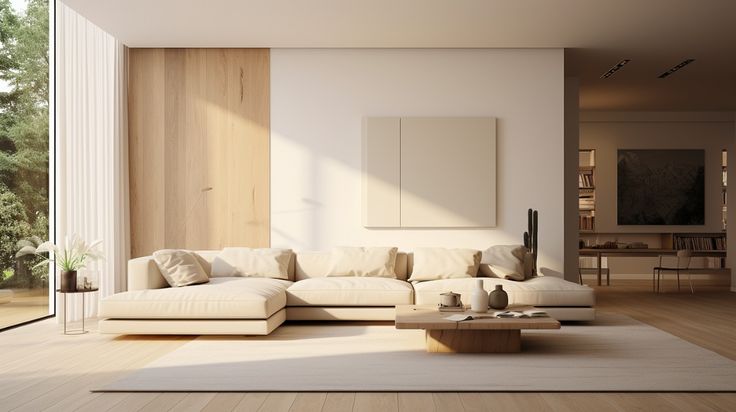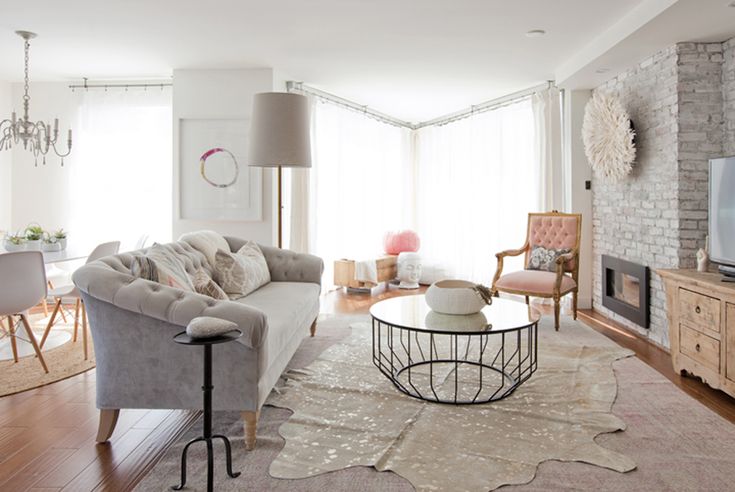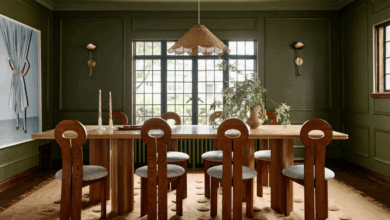Less Is More: Minimalist Interiors

The concept of “less is more” has transcended mere aesthetic preference to become a guiding philosophy in many facets of modern life, nowhere more evident than in the realm of interior design. Minimalist interiors, far from being stark or uninviting, offer a sanctuary of calm and clarity in an increasingly cluttered world. This design approach, characterized by simplicity, clean lines, and a focus on functionality, isn’t just about stripping away; it’s about curating a space that fosters peace, promotes productivity, and ultimately enhances well-being. It’s an intentional choice to prioritize quality over quantity, purpose over embellishment, and serenity over chaos.
The Essence of Minimalism in Design
At its heart, minimalist interior design champions the idea that true beauty lies in simplicity and thoughtful curation. It’s a deliberate act of paring down to essentials, ensuring every element within a space serves a purpose, whether functional or aesthetic. This isn’t about emptiness, but rather about creating visual breathing room, allowing each chosen object to shine. The philosophy is deeply rooted in various cultural and historical movements, from traditional Japanese Zen aesthetics, which value emptiness and natural elements, to the Bauhaus school of design, which emphasized form following function.
The allure of minimalist interiors is multifaceted. In a consumer-driven society where we are constantly bombarded with stimuli and encouraged to acquire more, minimalism offers a refreshing antidote. It promotes a sense of control over our environments, reducing visual noise and mental clutter. This, in turn, can lead to reduced stress, improved focus, and a greater appreciation for the possessions we do have. It’s a deliberate rejection of excess, embracing instead a thoughtful approach to our living spaces that reflects our values and simplifies our lives.
Core Principles of Minimalist Design
Achieving a truly effective minimalist interior goes beyond simply removing items. It involves a systematic application of several key principles that work in harmony to create a cohesive and tranquil environment.
A. Decluttering: The Foundation of Serenity
The most fundamental step in creating a minimalist interior is ruthless decluttering. This isn’t just tidying up; it’s a profound process of evaluating every item in your home and questioning its necessity, utility, and emotional value. The goal is to eliminate anything that doesn’t serve a purpose or bring genuine joy. This includes:
- Removing Duplicates: Do you really need three spatulas or five nearly identical throws?
- Addressing “Just in Case” Items: These often accumulate and rarely get used. If it hasn’t been used in a year (or two, depending on the item), consider letting it go.
- Tackling Sentimental Clutter: While emotionally challenging, selecting a few truly meaningful items to display thoughtfully is more impactful than holding onto everything.
- Digitizing Where Possible: Papers, photos, and media can often be scanned or streamed, reducing physical clutter.
- Adopting a One-In, One-Out Rule: When you acquire something new, commit to letting go of something old.
The benefits of decluttering extend beyond aesthetics; it frees up physical space, makes cleaning easier, and reduces decision fatigue.
B. Clean Lines and Simple Forms
Minimalist interiors heavily favor furniture and architectural elements with clean, straight lines and simple, geometric forms. Ornate carvings, excessive embellishments, and fussy details are deliberately avoided. This creates a sense of order, structure, and visual calm.
- Furniture Choices: Opt for pieces with straightforward silhouettes, often made from natural materials like wood, metal, or glass. Sofas are typically low-profile with simple upholstery, and tables have slim legs and uncluttered surfaces.
- Architectural Features: Walls are kept bare or minimally adorned. Doorways and windows are often frameless or feature very simple trim. Built-in storage solutions are preferred to maintain seamless walls.
- Absence of Clutter: Surfaces are kept clear. If an item is on display, it’s typically a carefully chosen piece of art, a plant, or a functional object that also possesses aesthetic merit.
This emphasis on clean lines promotes a feeling of spaciousness and prevents visual “busyness.”
C. Neutral Color Palettes: The Canvas of Calm
Color plays a crucial role in establishing the serene ambiance of minimalist interiors. Neutral color palettes are dominant, typically featuring shades of white, off-white, beige, grey, and soft browns.
- Expanding the Space: Lighter, neutral colors reflect light, making rooms feel larger, airier, and more open.
- Creating a Harmonious Base: They provide a calming backdrop that allows textures, natural light, and a few carefully selected accent pieces to stand out without competing.
- Layering Neutrals: Rather than being monotonous, a skilled minimalist designer will layer different shades and tones of neutrals, along with varying textures, to add depth and interest. For example, a crisp white wall might be complemented by an off-white linen sofa, a light grey rug, and a natural wood coffee table.
- Subtle Accents: While neutrals dominate, very subtle pops of color can be introduced through a single piece of art, a throw pillow, or a small plant, but these are used sparingly to maintain overall tranquility.
D. Thoughtful Lighting: Illuminating Serenity
Lighting in minimalist interiors is not merely functional; it’s an integral design element that shapes the mood and highlights key features. The emphasis is on natural light whenever possible, complemented by strategic artificial lighting.
- Maximizing Natural Light: Windows are kept unobstructed, often with sheer curtains or no window treatments at all. Mirrors are strategically placed to amplify natural light.
- Layered Artificial Lighting: A combination of ambient (general illumination), task (for specific activities like reading), and accent lighting (to highlight art or architectural features) is used.
- Minimalist Fixtures: Lighting fixtures themselves are often simple and understated, blending into the background or serving as sculptural elements without being overly decorative. Recessed lighting, track lighting, and simple pendant lights are common choices.
- Warm vs. Cool Tones: Warmer light temperatures (lower Kelvin numbers) tend to create a cozier, more inviting atmosphere, while cooler tones (higher Kelvin numbers) can feel more modern and stimulating. The choice depends on the desired mood for each space.
E. Quality Over Quantity: Investing in Essentials
Minimalist design encourages a shift from compulsive buying to thoughtful acquisition. Instead of filling a home with many inexpensive items, the focus is on investing in a few high-quality, durable pieces that will stand the test of time both in terms of construction and timeless design.
- Durability: Well-made furniture and decor are less likely to need frequent replacement, reducing waste.
- Timelessness: Classic designs resist fleeting trends, ensuring that pieces remain relevant and aesthetically pleasing for years.
- Craftsmanship: Appreciating the artistry and skill involved in creating a high-quality item.
- Functionality: Each item is chosen for its practical use as well as its aesthetic contribution. For example, a side table might also offer hidden storage.
This approach not only reduces consumerism but also often proves more economical in the long run.
F. Texture and Natural Elements: Adding Depth and Warmth

While the color palette in minimalist interiors is often muted, texture becomes paramount in adding warmth, depth, and visual interest, preventing the space from feeling sterile. Natural elements further ground the design and connect it to the outside world.
- Layering Textures: Incorporate a variety of textures through materials like linen, wool, cotton, sisal, wood, stone, and ceramic. A smooth wall might be contrasted with a chunky knit throw or a rough-hewn wooden table.
- Natural Materials: Emphasize exposed wood grains, unpolished stone, and plants. These elements introduce organic forms and a sense of life into the otherwise stark environment.
- Subtle Patterns: If patterns are used, they are typically subtle and organic, such as faint stripes, simple geometric repeats, or the natural grain of wood.
These elements provide a tactile and visual richness that elevates the minimalist aesthetic.
G. Smart Storage Solutions: Hiding the Clutter
Effective storage is the unsung hero of any minimalist interior. The goal is to keep surfaces clear and visible clutter to an absolute minimum.
- Built-in Cabinetry: Custom built-ins provide seamless storage that blends with the architecture, maximizing space utilization.
- Multi-functional Furniture: Ottomans with hidden storage, beds with built-in drawers, and coffee tables with shelving help stow away items.
- Concealed Storage: Closed cabinets, drawers, and baskets are preferred over open shelving for items that aren’t aesthetically pleasing.
- Vertical Space Utilization: Using tall, narrow shelving or wall-mounted units to take advantage of vertical space.
- Organized Interiors: Even within storage units, maintaining meticulous organization is key to preventing clutter from simply being hidden away.
The Benefits of Living Minimally
Embracing minimalist interior design extends far beyond superficial aesthetics. It offers a tangible array of benefits that positively impact daily living and overall well-being.
A. Reduced Stress and Enhanced Well-being
A cluttered environment often leads to a cluttered mind. Minimalist interiors, with their clean lines and open spaces, foster a sense of calm and order. This can significantly reduce stress levels, promote relaxation, and create a more peaceful home atmosphere. The visual simplicity reduces cognitive load, allowing for greater mental clarity and focus.
B. Increased Focus and Productivity
With fewer distractions, it’s easier to concentrate on tasks. Whether working from home, pursuing a hobby, or simply relaxing, a minimalist space provides an environment conducive to deep work and thoughtful contemplation, free from the constant pull of visual noise.
C. Easier Maintenance and Cleaning
Less stuff means less to clean, less to dust, and fewer obstacles to navigate. The streamlined nature of minimalist design makes maintaining a tidy home significantly less time-consuming and laborious, freeing up valuable time for other pursuits.
D. Financial Savings and Conscious Consumption
While initial investments in quality pieces might seem higher, the long-term financial benefits are substantial. Reduced impulse buying, less need for storage solutions for accumulating possessions, and greater durability of chosen items lead to overall savings. It encourages a shift towards conscious consumption, where purchases are deliberate and driven by need and quality rather than fleeting trends.
E. Environmental Impact
By promoting less consumption, longer product lifespans, and a focus on natural and sustainable materials, minimalist design inherently reduces our environmental footprint. It aligns perfectly with eco-conscious living, contributing to less waste, reduced demand for new resources, and a more sustainable lifestyle.
F. Greater Versatility and Adaptability
The neutral palette and simple forms of minimalist design make spaces highly adaptable. It’s easy to change the mood or update the look with just a few new accent pieces, without needing to overhaul the entire decor. This versatility allows the space to evolve with your needs and preferences over time.
Implementing Minimalism: Practical Steps

Transitioning to a minimalist interior doesn’t have to be an overwhelming overhaul. It can be a gradual, intentional process.
A. Start Small: One Room, One Drawer
Don’t feel pressured to tackle your entire home at once. Begin with a single drawer, a single shelf, or a small room like a bathroom or entryway. The success in a small area will motivate you to continue.
B. Define Your “Why”: Your Motivation
Before you begin, reflect on why you want to embrace minimalism. Is it for less stress, more free time, financial freedom, or environmental responsibility? Knowing your core motivation will help you stay committed during the process.
C. Embrace the “Empty Space”: Negative Space
Learn to appreciate the power of empty space. Not every corner needs to be filled. Negative space provides visual rest and allows the eye to appreciate the elements that are present. It’s as important as the objects themselves.
D. Curate, Don’t Decorate Excessively
Shift your mindset from “decorating” every surface to “curating” a few meaningful items. Each piece should be chosen intentionally, adding to the overall harmony of the space rather than simply filling it.
E. Involve the Whole Household
If you live with others, it’s crucial to involve them in the process. Discuss the benefits and agree on shared goals to ensure everyone is on board and contributes to maintaining the minimalist environment.
F. Be Patient and Iterative
Minimalism is a journey, not a destination. It’s okay if it takes time to pare down and refine your space. Revisit areas periodically, as your needs and priorities may change.
Beyond Aesthetics: A Lifestyle Choice
Ultimately, minimalist interiors are more than just a style of decor; they are a reflection of a conscious lifestyle choice. It’s about living intentionally, valuing experiences over possessions, and seeking contentment in simplicity. It’s about designing a life that feels authentic and freeing, where your home serves as a supportive backdrop rather than a source of burden. As we navigate an increasingly complex world, the principles of “less is more” offer a powerful pathway to greater peace, clarity, and genuine well-being.






